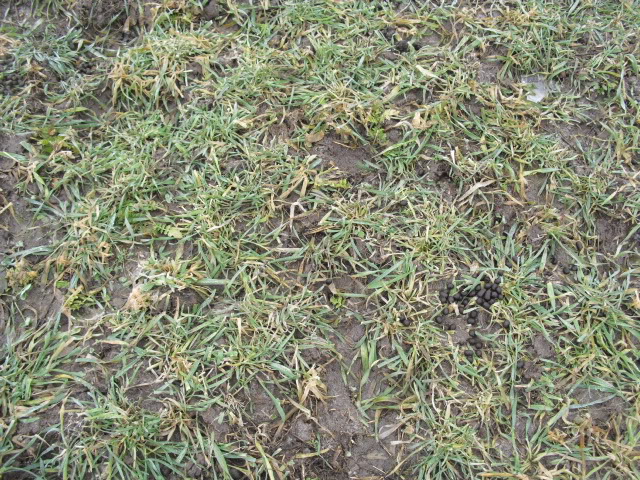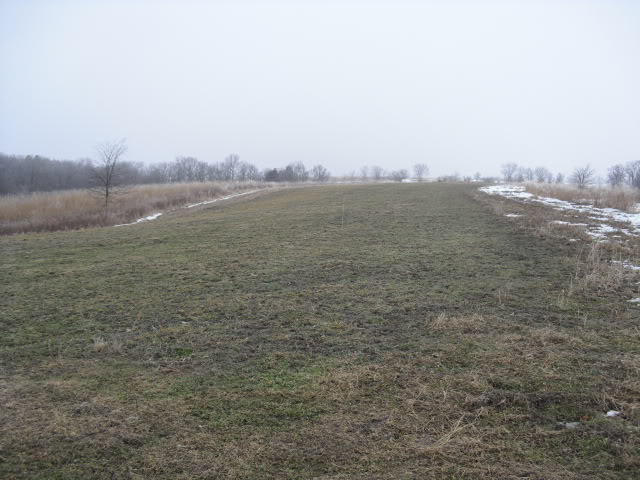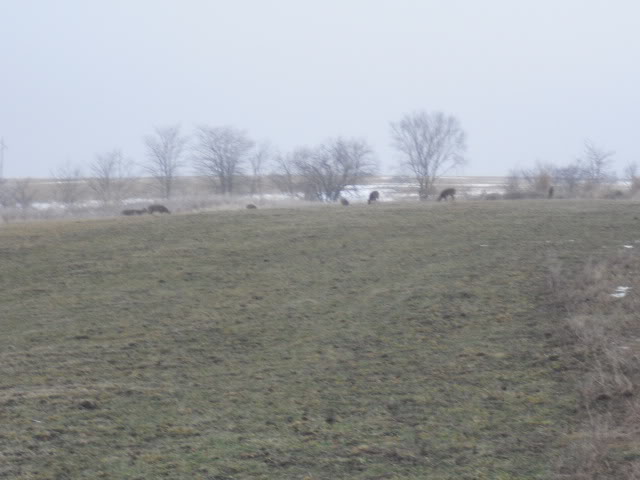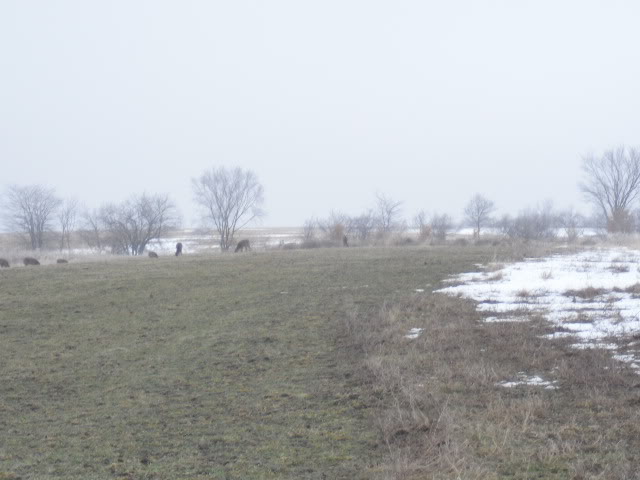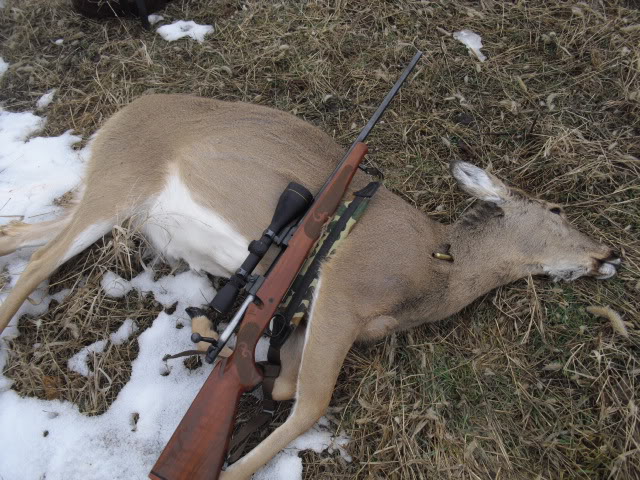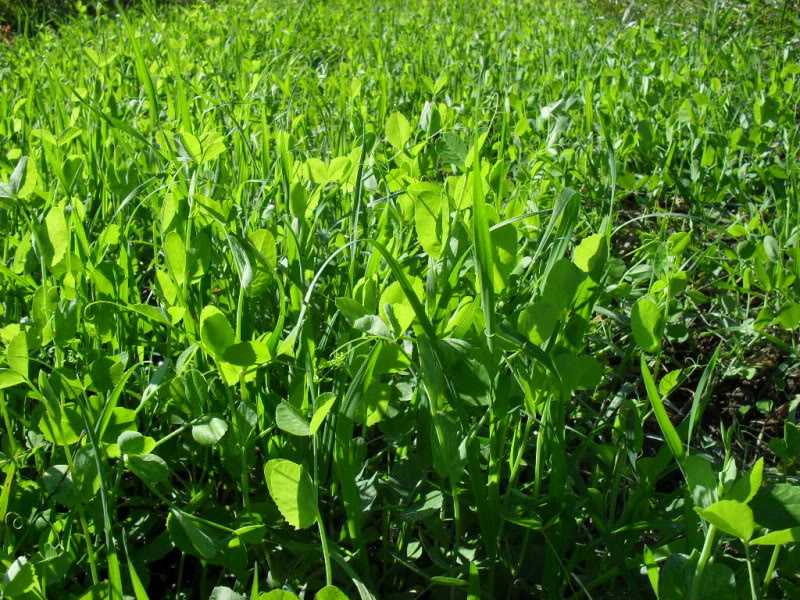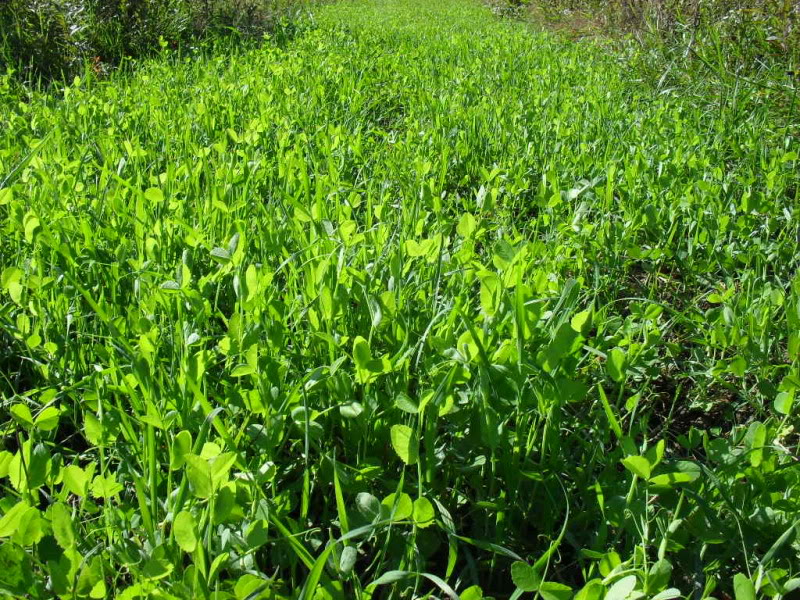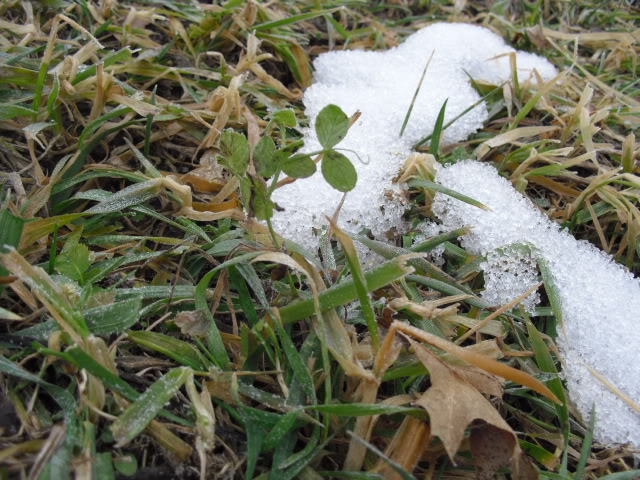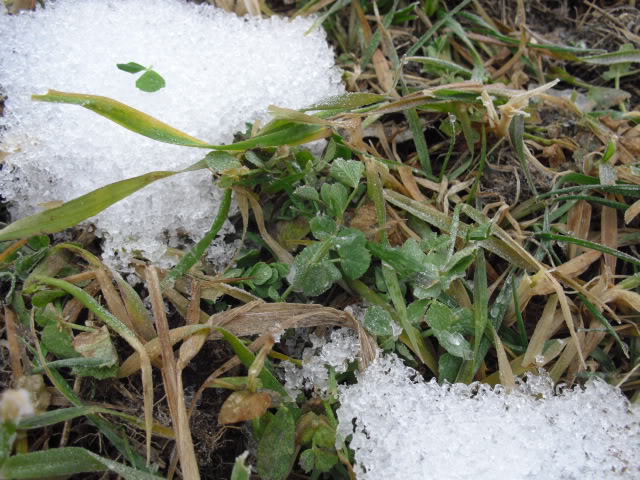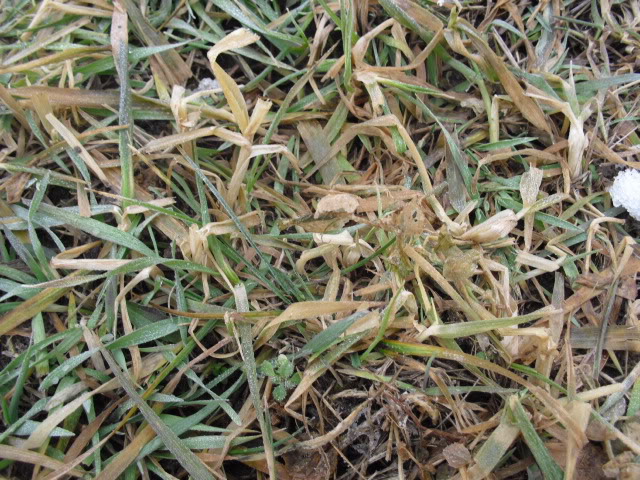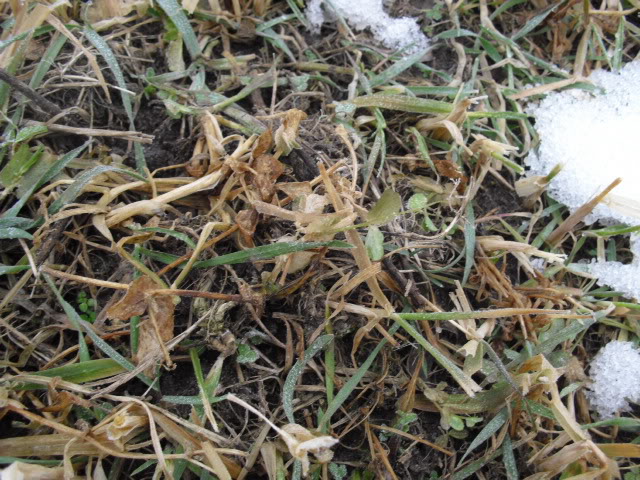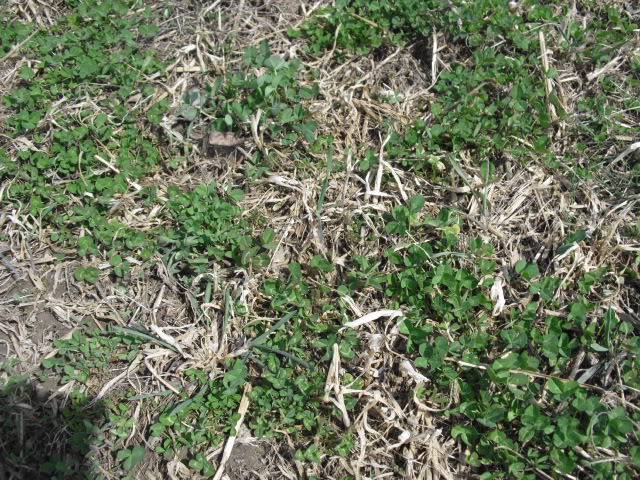Nearly 50 years ago now, the Big Top came to our little town, something that doesn't happen anymore. My parents took us kids to the circus and I'll never forget looking up at the vivid images painted onto the tent of wild animals.
Right above the entry way a tiger, paws outstretched, claws embedded into a hapless zebra and streams of blood flowing left an unforgettable image in a small boys mind. I entered the tent fully expecting to see animals being attacked and left later confused by what I had seen. To this day I remember not a single thing from the actual circus, so focused was I on that painted image and what I expected to see.
That night my Dad sat on the edge of my bed and patiently tried to explain that it was all for show but "why...why would they show that picture if it wasn't true??" I asked repeatedly....
I share that little story because a few still remain focused on the issue of protein in winter cereals and miss out completely on the the "whole show" in regards to recognizing all the attributes of winter rye.
That in mind I would like to re-visit one "act" if you will, one attribute that winter rye has over winter wheat...keeping in mind that like a circus comprised of many acts, this is only
ONE reason to plant rye as a fall attractant.
Let's talk about protein...
Crude Protein (CP)- the total amount of protein present as calculated from the total nitrogen present. Unless otherwise stated, protein values given in lab reports, feed tables and feed tags are crude protein. Laboratory analysis measures the total amount of nitrogen present in a feed. The per cent nitrogen is converted to per cent protein by multiplying by 6.25.
Forages high in protein are very important in spring and summer months when lactating does and bucks in antler development stage require high levels. Clover, alfalfa and soybeans are just a few forages that fill that need.
As fall approaches deer begin to seek out food sources high in energy and fat such as acorns or corn when putting on fat reserves is more important then body development.
Shelled corn is only
8-12% protein yet deer seek it out in earnest and acorns often even lower in protein but once they start dropping deer flock to them like magnets so at this point arguing the merits of protein becomes less important....I mention that because we will look at CP levels in winter rye as high as 34%!!
Very few landowners learning how, what and why to plant various crops for whitetails have a farm background and even fewer have actually tested crops for CP and TDN but I am fortunate to have done both. That knowledge gives me an understanding not only how ruminants digest various food sources but how forage testing works and the variables involved. Any farmer knows full well that they need to depend on multiple tests from a variety of sources before deciding what crop species or variety will yield the highest dry matter and crude protein levels.
When discussing CP levels in ANY crop one must be aware that they can vary widely even in the same field! Crop to crop, year to year they vary even more and there is a HUGE difference in when the crop is tested. Plants harvested and tested while young and tender have much higher CP levels then those more mature.
Suffice it to say then that NOTHING is cut in stone regarding CP because it is highly variable and unpredictable so we can only deal in generalities and averages taken from many many tests across the country.
Such is the case when comparing rye with wheat because if you test long enough and far enough with many different varieties one can sooner or later come up with what appears to be conflicting information...so we deal in
averages, not ONE test.
There are a couple reasons why we sometimes see conflicting data beyond those already stated.
1) Newer improved varieties of forage rye have been developed that supersede older varieties and previous tests...in other words things change and some tests are now out dated.
2) Northern varieties of cereal rye do not do well in southern states so Wren's Abruzzi Rye and other new varieties were developed, better adapted to the south. Initial tests done in the past did not use improved varieties of rye for testing in the south and so yield data that is no longer valid, yet those tests are still held as valid by unknowing land managers.
3) Many tests compare winter cereals harvested in the boot or dough stage for hay or silage in the spring when we only care about cereals in the tiller stage for fall grazing.
Elbon, Aroostook, Oklon, and Winter King are all great forage varieties with Winter King usually coming out on top against both other rye varieties and wheat and in testing done by Ohio State University they out yielded and out performed Caldwell wheat.
Even unknown variety rye did better then wheat with winter rye averaging 2-5% higher CP
Winter Rye for Extending the Grazing Season
Table 1. Forage dry matter yield and quality of winter rye varieties planted in southern Ohio (Jackson County).
Sown September 20, 1993 Sown September 20, 1994 Sown October 19, 1995 Harvested December 9, 1993 Harvested December 14,1994 Harvested
March 31, 1995 Harvested May 2, 1996
Cultivars Yieldlb/A CP% ADF% NDF% Yieldlb/A CP% NDF% Yieldlb/A CP% NDF% Yield lb/A CP% ADF% NDF%
Dacold 1390 27.9 17.9 31.5
Prima 1488 26.5 17.3 32.8
Paster 2120 27.7 19.6 33.1 2698 13.1 28.2 58.0
Variety unstated 1500 25.2 18.1 32.0 1321 29.4 27.9 2404 23.2 45.6 2047 15.9 24.2 52.2
Aroostook 2470 26.5 20.7 36.7 1682 32.1 30.4 2659 24.5 46.6 3593 12.5 35.9 64.1
Winter King 1988 33.7 31.0 2616 22.8 46.9 3362 13.0 34.8 64.4
Wheeler 2124 30.7 29.5 2482 25.7 42.5
Elbon 1566 31.4 30.5 2981 25.3 47.2
Maton 1578 32.5 31.6 2538 21.5 45.9
Oklon 2018 32.9 30.9 2622 27.0 47.5
Trical triticale 1091 31.3 29.3 2304 21.8 43.9
Caldwell wheat 1018 28.8 30.1 1980 21.8 44.5 1390 19.5
If one is able to read these links
not focused on one thing but
ALL the attributes of cereal rye you begin to notice many details such as this:
Along with the high yield potential and early-spring grazing that winter rye can offer, producers need to consider the forage quality characteristics of rye. High-quality grasses have >18% crude protein (CP), < 35% acid detergent fiber (ADF), and < 55% neutral detergent fiber (NDF). The ADF and NDF values are indicators of the digestibility and the potential intake of the forage. In Ohio studies, CP levels of rye were as high as 34%, ADF values as low as 17%, and NDF values as low as 28%. When rye is grazed in the vegetative stage, it is highly digestible and intake is not limited, making it more suitable for livestock with high nutritional needs.
From this link:
Rye
Rye matures earlier than wheat or triticale and has the highest crude protein levels
The testing done showed rye at 2% higher CP but I would also note that the cereals were harvested for silage in the spring when quality is pehaps 2/3 lower then it would be for fall grazing.
Here again CP is higher and the yield difference is for spring harvested cereals, something that has no significant bearing on fall forage for whitetails.
Winter Rye
Dry matter yields for winter rye harvested in the boot to early heading stages of growth will often reach 3 tons of dry matter per acre. This is lower than winter wheat forage yields but significantly more than any of the spring sown small grains harvested for forage.
From a forage quality standpoint, winter rye will have a higher crude protein percent than winter wheat. Winter rye crude protein concentration usually is between 13 and 14 percent if adequately fertilized with nitrogen.
This link talks about over seeding cereal rye into soybeans and compares yields and nutritive values with ryegrass (not to be confused with cereal rye)
Overseeding Cereal Rye into Soybean
The following is very important because we want our fall cereal grain to be growing as late as possible and to begin growing in the spring ASAP and winter rye is the clear winner in that regard.
High On Rye
[quote
]"Rye grows under cooler temperatures than other small grains so it will grow later into the winter and start growing earlier in the spring," says Undersander. "It's also the most winterhardy of the small grains." [/quote]
This link is full of interesting facts about winter rye including spring planting where needed and has plenty of CP data as well.
Rye - More forage less weeds
This link has some great notes on winter rye:
Small grain grazing
Cereal rye is the most winter hardy of the small grains and will continue growth at colder temperatures than the others.
Trials - In our trials, certain varieties were able to produce nearly 2,500 pounds of dry matter per acre in about 80 days (Sept. 20 to Dec. 9).
Crude protein values in these late fall harvests ranged from 25.5 percent to 33.7 percent
High quality. Fiber values showed similar high quality characteristics. Neutral detergent fiber (NDF) levels were consistently in the high 20s to low 30s. That’s highly digestible feed!
Using Fall Rye for Pasture
The nutrient level of fall rye for pasture is excellent. Protein levels will vary with the amount of soil nitrogen and growing conditions, but a dry matter protein content of 18 to 23 per cent can be expected.
Fibre levels are generally 25 to 30 per cent. At Brooks, (irrigated) spring seeded fall rye had a higher protein content throughout the summer than oats, barley or utility wheat. Fall rye sampled the end of October still had a protein content of 22.4 per cent. The fact that fall rye can maintain quality late in the season makes it a good late season pasture.
Forage News
Cereal rye is another option that can produce a high quality crop for grazing in December and in March. What sets this crop apart from the rest is that it is high quality and is the first crop to green up in the spring.
CEREAL RYE
Secale cereale
Reasons for rye’s widespread use include:
It is winter-hardy, allowing it to grow longer into fall and resume growth earlier in the spring than most other cover crops.
It produces a lot of biomass, which translates into a long-lasting residue cover in conservation tillage systems.
It crowds out and out-competes winter annual weeds, while rye residue helps suppress summer weeds.
It scavenges nutrients—particularly nitrogen —very effectively, helping keep nutrients on the farm and out of surface and ground water.
It is relatively inexpensive and easy to seed.
It works well in mixtures with legumes, resulting in greater biomass production and more complete fall/winter ground cover.
Albert Lea Seed
As a forage, winter rye is highly productive producing 2.5 – 4 tons of dry matter by late May. It is best to harvest it for forage before it heads out. Clear Lake, IA “I planted winter rye in October and chopped it on June 4. It yielded 8-10 tons/acre. I planted a 1.9 maturity soybean on that field as soon as I chopped the rye. They yielded 54 Bu./Acre. I’ve been doing that for 5 years now.”
Winter rye is seeded in the fall and can germinate down to 35 degrees Farenheit. Its winter hardiness is legendary. Stories such as this one are common: Riceville, IA “I no-tilled rye into corn stalks on Nov. 5th. It froze solid 3 days after I planted it. It came up good in the spring.” It is possible, but uncommon, for winter rye to winterkill. Do not seed rye more than 1.5 inches deep, as it is sensitive to seeding depth.
Decomposing winter rye trash can have an allelopathic effect on germinating weed (and crop) seeds. It seems to have the strongest effect on small grass seeds and weed seeds but we have had reports of negative effects on corn stands. In general, the more rye trash there is, the more it will inhibit the germination of seedlings. If the rye plant is taken off as forage, this will reduce the allelopathic effect. Soybeans follow winter rye extremely well. Most growers report excellent “clean” soybean stands following winter rye.
Thoughts for southern states
Recommended Forages for Winter Pasture
Rye – Rye is the small grain most widely used for winter grazing. Rye is more cold tolerant than oats and generally produces more forage than either oats or wheat. If rye is planted very early in the season, there may be a decreased stand caused by various seedling diseases. Normally rye developed from northern states will produce little forage in late fall or early winter and will usually be severely damaged by leaf rust; therefore, plant only varieties recommended for the Southeastern U.S.
Recommended varieties: FL 401 (for early grazing or for use in blends), AGS 104, Wrens 96, Wrens Abruzzi, Bates, Oklon, Wintergrazer 70, and Early Graze.
Rye and Triticale Breeding in the South
Rye is an excellent temporary winter forage crop widely used by livestock producers. It is also the most dependable cereal species for winter grazing. Rye has greater cold tolerance, quicker growth at low temperatures, and more uniform seasonal forage production in comparison to wheat, oats, barley or triticale.
The following are more links to help you better understand forage testing and more links on winter rye and how it builds soil, holds nitrogen, helps control weeds all the while feeding your whitetails high quality forage.
Know Your Feed Terms
National Forage Testing Association
Forage Testing Archives Interpreting Forage Analysis
Cereal Rye
Weed Control With Winter Rye
Rye as a Cover Crop
University Forage Links
Rye - King of Cover Crops
Red Clover in Winter Cereals
If all of that is not enough....wheat is notorious for extensive tillering making it a poor choice to add companion crops too. Winter rye on the other hand goes with peas like peanut butter and jelly! Planting any cereal alone is like going to the circus and watching ONE act all night...BORING!!
Did you know for instance that winter rye and peas combined have a forage equivalent to alfalfa??
Even though I have shown repeated tests showing winter rye well ahead of wheat in AVERAGE CP...don't focus on ONE thing...look instead at all the reasons why winter rye is a better choice for landowners or risk watching a one act circus...year after year......








